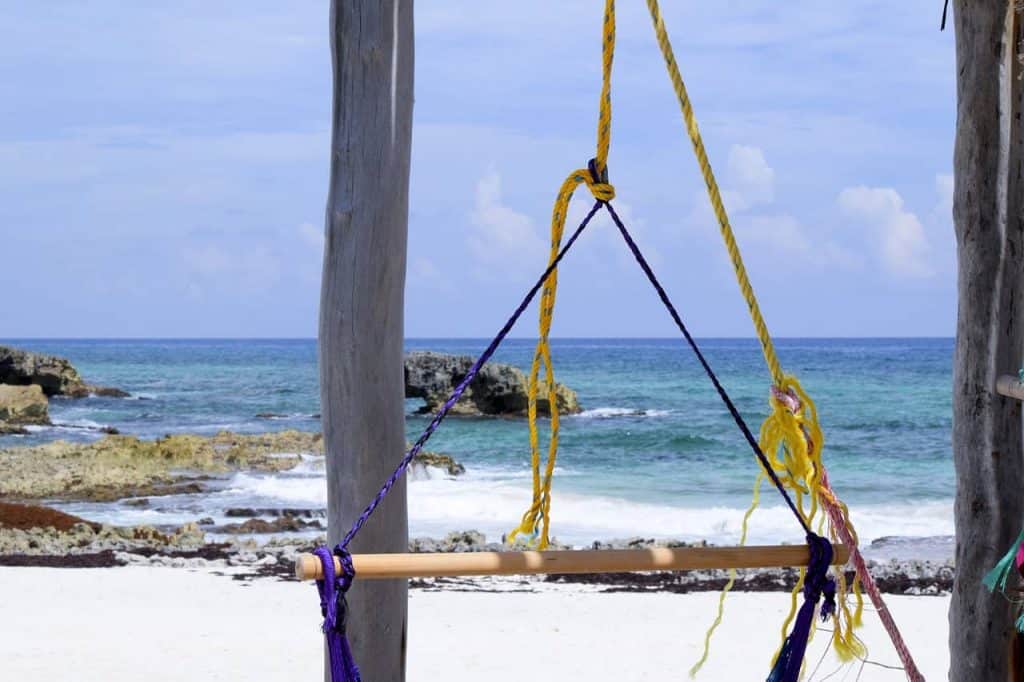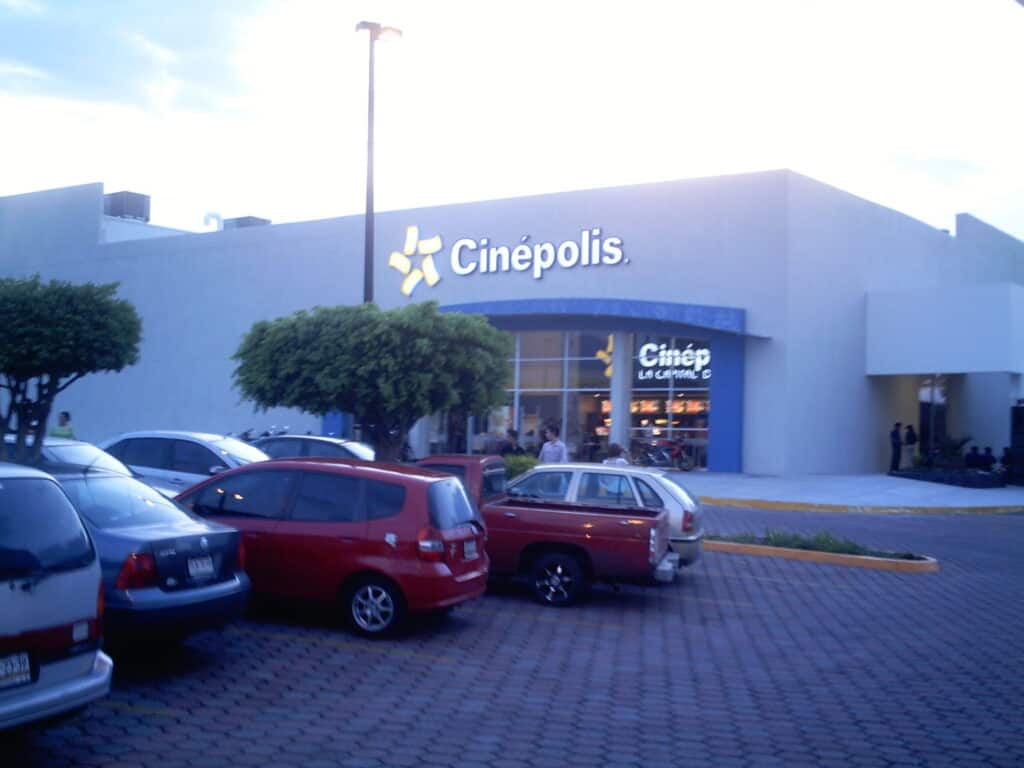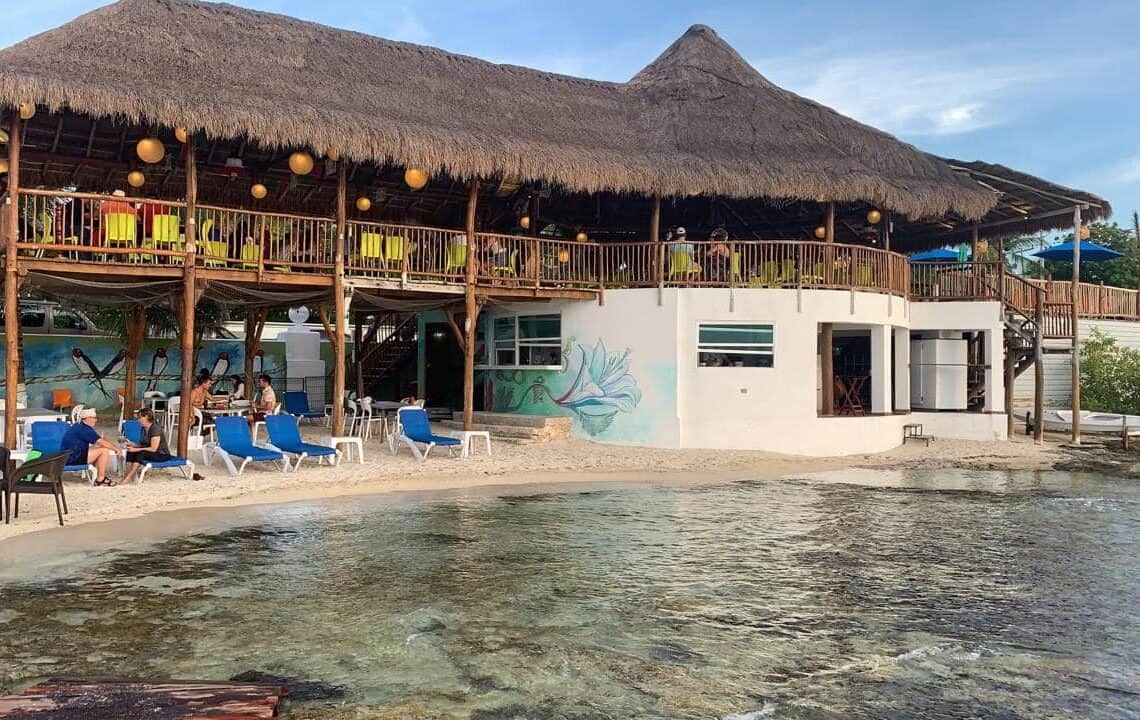Unusual Local customs that Vacationers find on Cozumel
Beyond the Reef: The “Weird” and Wonderful Local Customs That Are the Real Cozumel
Let’s start with a truth.
If you’re in your 40s or 50s, you’ve probably been on a few “tropical vacations.” You know the script: land, check in, find the pool bar, book a snorkel tour, buy a souvenir, fly home. It’s… fine.
And you can absolutely do that in Cozumel. You can come here, dive the legendary Palancar and Columbia Reefs, and never set foot off the main tourist drag in San Miguel. You will have a lovely, sun-kissed, perfectly pleasant time.
But you’ll have missed the point.
You’ll have missed the magic. Because the real Cozumel, the one that gets under your skin and calls you back, isn’t just the turquoise water. It’s the people. It’s the island’s beating heart, a wild, strange, and beautiful mix of ancient Mayan ritual and fiery Mexican pride.
You’ve done the beach party. Your back hurts a little, and you’re more interested in a great story than a $2 shot. You’re ready for something real.
The history here is layered. You’ve got pirates like Henry Morgan (yes, that Captain Morgan), stories of the island’s repopulation, and Mayan secrets woven into every side street. So, if you’re ready to explore beyond the beach, let’s talk about the “weird” local customs you absolutely cannot miss.
And by “weird,” I mean “wonderful, specific, and not found in any tourist brochure.”
Carnaval: This Isn’t Your Kid’s Spring Break
First, let’s get the big one out of the way. When you hear “Carnaval,” you probably picture Mardi Gras—pure, unadulterated chaos.
The Cozumel Carnaval, which hits in late February or early March, is different. Yes, it’s a massive, pre-Lenten street party. But here’s the twist: it’s a family affair.
This is one of the oldest Carnavals in Mexico, with over 150 years of history. It’s not just a party; it’s a deeply-rooted tradition. The streets of San Miguel explode in a frenzy of pageantry and fun. You’ll see entire families, from grandmas in lawn chairs to kids on their dads’ shoulders, all out to watch.
What you’ll actually see:
Parades and Costumes: This is the main event. The streets come alive with floats, towering, elaborate costumes covered in feathers and sequins, and locals dancing their hearts out. You’ll see the traditional Jarana, a lively dance of footwork and grace.
Carnival Royalty: This is a huge deal. The King and Queen of the Carnival are chosen from the community, and their coronation officially kicks off the party.
That “Weird” Flying Thing: You might get to see the Danza de los Voladores (Dance of the Flyers). This is a breathtaking, ancient ritual where men climb a massive pole, tie themselves on with ropes, and… fly… upside down, spinning to the ground. It’s heart-in-your-throat beautiful and has roots in ancient Mayan rituals.
The Food: Forget the bad hot dogs. Food stalls pop up everywhere, offering real, local specialties. Think fresh-off-the-boat ceviche, complex mole, and endless tacos.
When the sun goes down, fireworks light up the sky, and beach parties spill onto the sand. But even in the middle of it all, the vibe is “joyful,” not “sloppy.” It’s the island’s personality shining at its brightest.

Los Tres Reyes Magos: The Christmas That Lasts
Just as you’re packing away your own holiday decorations, Cozumel is gearing up for the real finale of the Christmas season.
In many parts of the world, Santa Claus has (forgive me) elbowed out the competition. But in Cozumel, tradition holds strong. Here, the main event is Los Tres Reyes Magos (The Three Wise Men, or Magi) on January 6th.
This is the day of Día de Los Reyes. This is when kids really get their gifts. On the night of January 5th, children put their shoes out on the windowsill or by the door. They might also leave out letters (Cartas a los Magos) and some hay and water for the Magi’s animals. In the morning, poof—the shoes are filled with gifts.
But the “weird” and wonderful part? It’s the bread.
It’s called the Rosca de Reyes. This is a large, sweet bread, shaped like a ring (to represent a king’s crown) and decorated with candied fruits (the “jewels”). It’s delicious. But it’s also a trap.
Hidden inside the bread is a tiny, plastic baby Jesus.
Here’s the deal: The whole family gathers for La Merienda (a pre-dinner snack) to slice up the Rosca. Everyone is watching. If your slice has the baby… you’re blessed! You’ve found him!
Also, you’re now financially responsible for hosting a party on February 2nd.
Seriously. Finding the baby means you have to buy tamales and atole (a warm, thick drink) for everyone at the Candelaria (Candlemas) celebration. It’s a brilliant, delicious social contract hidden inside a pastry. It’s the tradition that keeps on giving… and taking.
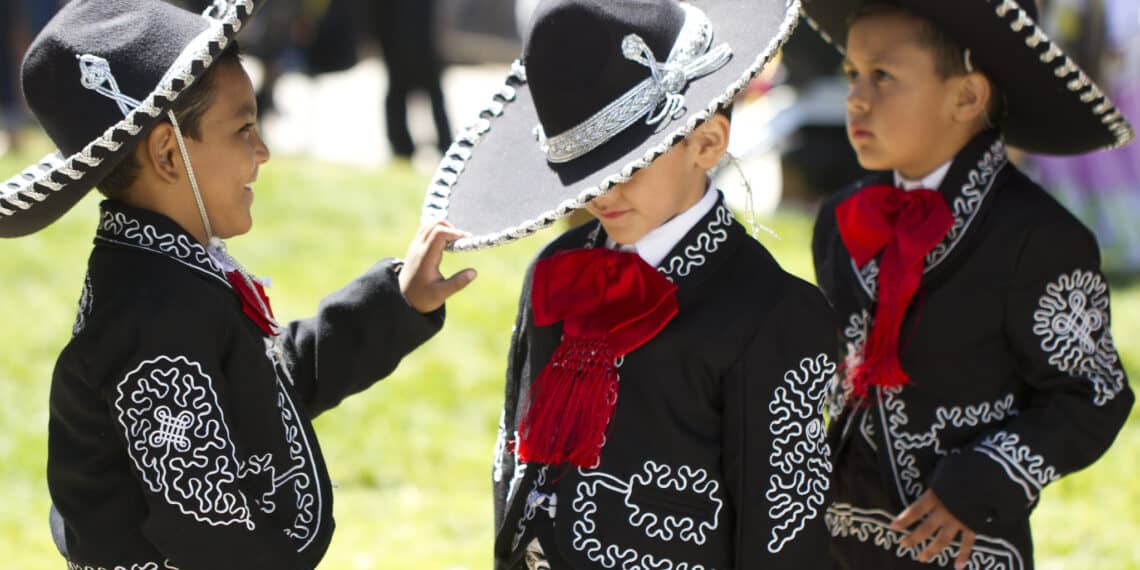
Día de la Independencia: The Night of the “Grito”
We all have our patriotic holidays. In the U.S., it’s the 4th of July. You grill, you watch fireworks, you call it a day.
Mexico takes it to another level.
Mexican Independence Day is officially September 16th. But the real party—the one that matters—is the night before, on September 15th.
This is the night of “El Grito de Dolores” (The Cry of Dolores). It’s a reenactment of the famous call to arms in 1810 that sparked the war for independence.
Around 11 PM, you need to be in the main square, Plaza del Sol. The energy is electric. The plaza is packed with thousands of locals and visitors, waving Mexican flags. The municipal president comes out onto the balcony of the city hall, rings the historic bell, and recites the “Grito.”
It’s a call-and-response, ending with a thunderous, repeated “¡VIVA MÉXICO!” that will give you goosebumps, followed by a 21-shot salute and the full-throated singing of the national anthem.
The entire square just explodes with pride.
And, of course, the food. The plaza is a feast for the senses. You’ll smell the esquites (sweet corn in a cup with lime, chili, and cheese), the crispy-sweet marquesitas (a rolled-up crepe-like waffle), and savory tamales.
The star of the show, though, is Chiles en Nogada. It’s the patriotic dish. It’s a roasted poblano pepper stuffed with a mix of meat and fruits, covered in a creamy white walnut sauce (nogada), and sprinkled with red pomegranate seeds.
Green, white, and red. It’s the Mexican flag on a plate. It’s a taste of history, and it’s absolutely incredible.
El Cedral Fiesta: A 170-Year-Old Promise
This… this is my favorite. This is where it gets really local and wonderfully “weird.”
If you drive south, you’ll find the small town of El Cedral. It’s the oldest settlement on the island. And every year, in late April or early May, it hosts a festival that’s part holy day, part county fair, and 100% Cozumel.
The story goes back over 170 years. A man named Casimiro Cárdenas was one of the only survivors of a brutal attack on his village on the mainland during the Caste War. He fled to Cozumel, clutching a small, wooden cross. He made a promise: that he and his descendants would honor that cross every year.
And they still do.
The El Cedral Fiesta is the fulfillment of that promise. The cross is the anchor of the whole event. But how do they celebrate?
With rodeos. And bullfights. (Yes, proper bullfights. It’s intense.) And horse racing. And music, and dancing, and giant feasts of roast meat, and exhibitions of regional handicrafts.
It’s a bizarre, fascinating mix of sacred devotion and rowdy, rural celebration. It’s like a promise to a holy relic is being celebrated with a state fair. It’s loud, it’s dusty, it’s full of life, and it feels like stepping back in time. You’ll see families who have been participating for generations, all to honor a promise made by one man.
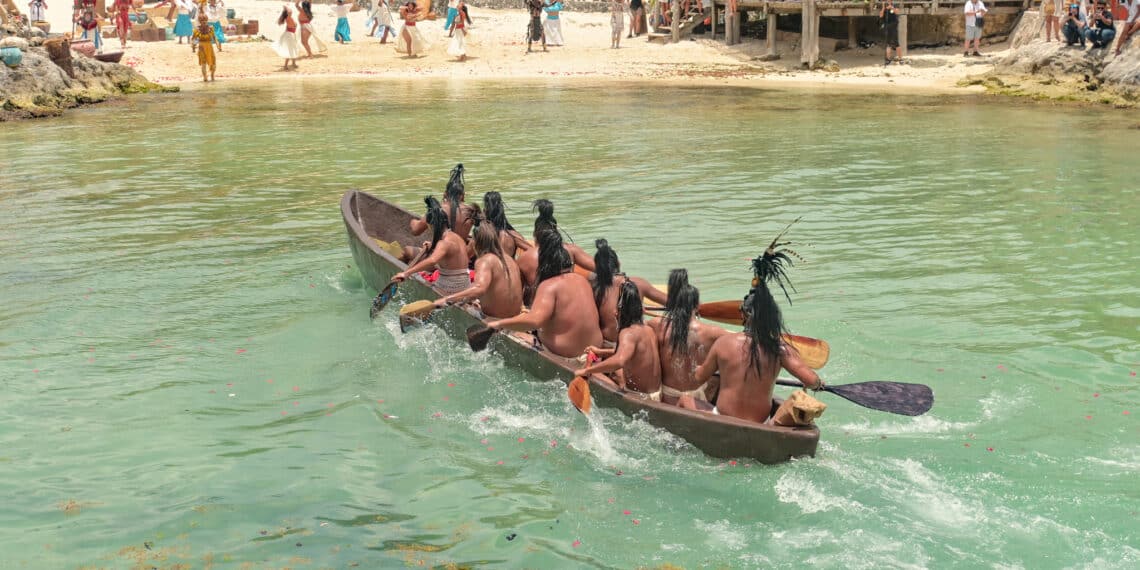
The Sacred Maya Crossing: The Heartbeat of the Island
This isn’t a “custom” so much as an epic, spiritual rebirth.
It’s called the Travesía Sagrada Maya (Sacred Maya Crossing), and it is one of the most moving things you will ever witness.
For centuries, Cozumel (then called Cuzamil) was a sacred pilgrimage site. Ancient Mayans would make the dangerous open-water journey from the mainland (Polé, now Xcaret) to the island to pay tribute to Ixchel, the powerful Maya goddess of the moon, fertility, and medicine. It was a spiritual journey, a cultural exchange, and a commercial trade route.
When Europeans arrived, the ritual was suppressed and eventually died out.
But, in a fascinating blend of ancient history and modern effort, the tradition was reborn. Grupo Xcaret (the folks behind the eco-parks) worked with the community and historians to revive it.
Today, this is a living ritual.
For months, volunteers—locals, foreigners, people of Maya descent, people with no connection other than a love for the culture—go through brutal physical and mental training. They learn to row, swim, float, and work as a team.
Then, at dawn, they get in traditional, hand-painted canoes and they row.
They row 28 kilometers (about 17 miles) across the open, unpredictable Cozumel channel. The journey takes 6 to 8 hours. Each canoe has a crew: a Proel at the front to set the pace, a team of paddlers, and a helmsman at the back for balance.
For the participants, it’s a symbolic death and rebirth. They leave the mainland and enter the unknown.
And on the shores of Cozumel, the entire community gathers. They wait for hours, scanning the horizon. When the first canoes are spotted, a cheer goes up. As the exhausted, triumphant, weeping canoers land on the beach, they are greeted as heroes—with food, gifts, and celebration.
It’s a testament to endurance, a bridge to the ancient past, and a powerful, living piece of Maya culture.
Touching the Past: Where to Find the Gods
You can’t talk about Ixchel and the Maya without visiting their home.
The destination for those ancient canoe pilgrimages was San Gervasio. These are the most famous and most important Mayan ruins on the island. This was the center of worship for Ixchel.
When you walk this site, you’re walking on sacred ground. You can see the Ka’na Nah (the “Tall House”), which was likely the primary temple where pilgrims would pay tribute. You’ll also find the “Manitas” structure, named for the small, red handprints on the wall.
It’s not as massive as Chichen Itza, but it’s more… intimate. You can feel the history. This is why the island is special.
And suppose you want a more “curated” experience. In that case, the Discover Mexico Cultural Park is a fantastic way to see it all in one place, with interactive exhibits that tie together all this history.
So, Why Does This Matter?
You can come to Cozumel and have a great time. But in your 40s and 50s, travel starts to mean more. We’re not just collecting photos; we’re collecting moments. We’re looking for a connection.
The Cozumel culture is your invitation.
It’s not locked behind museum glass. It’s lived in the streets. It’s in the Rosca bread that commits you to a future party. It’s in the Grito that makes your chest swell with second-hand pride. It’s in the exhaustion of the canoers and the joy of the crowd welcoming them home.
So, by all means, dive the reefs—lounge on the beach. But then, go a little deeper. Talk to the locals. Eat the esquites. Watch the parade. Be a part of the story.
Because that’s the Cozumel you’ll never forget.
Unusual Local customs that Vacationers find on Cozumel Read More »



